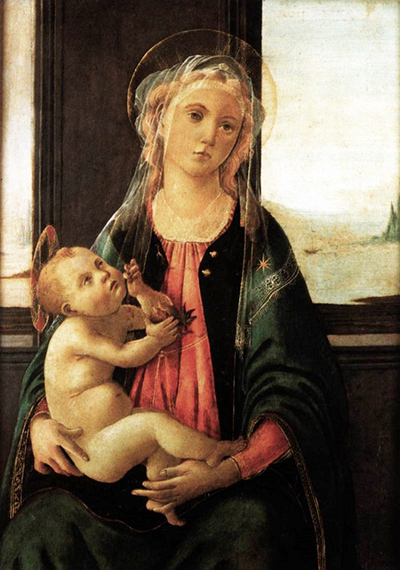The Galleria dell'Accademia in Florence possesses this small religious depiction by Sandro Botticelli from circa 1477
This particular fresco is attributed to Botticelli, though is still some controversy around that decision. The work was originally discovered in the convent of Santa Felicita in Florence and at the time required considerable work to repair it.
The combination of original brushwork and later amendments have placed a slight cloud over the artwork but is still is considered part of Botticelli's output of work, in line with his consistent use of the Virgin Mary as a theme for his portraiture.
The Galleria dell'Accademia, where this painting resides, is a prestigious venue for Renaissance art, perhaps having the best collection in Florence outside of the iconic Uffizi Gallery. Amongst their fine collection you will get to see works by the likes of Michelangelo, Giotto, Filippino Lippi and Domenico Ghirlandaio.
The name Madonna of the Sea is understood by looking closely at the background where a faint scene can be discovered. The sea itself is hard to make out, but observable once you know that it is there. Botticelli continues his use of symbolism in this artwork, with the child here holding a pomegranate which refers to Christ passion and the star Stella Maris, on shown on the Virgin's beautiful attire.
The connection between Stella Maris (star of the sea) and Mary (mare, meaning Sea) was surely no coincidence and again outlines this artist's consistent use of symbolism, often in a very obvious manner. Whilst not being considered one of Botticelli's finest pieces, probably more so due to the controversy surrounding its attribution, it never the less sits alongside some stunning Renaissance art in the Galleria dell'Accademia, from the likes of Paolo Uccello, Perugino, Filippino Lippi and Domenico Ghirlandaio.




